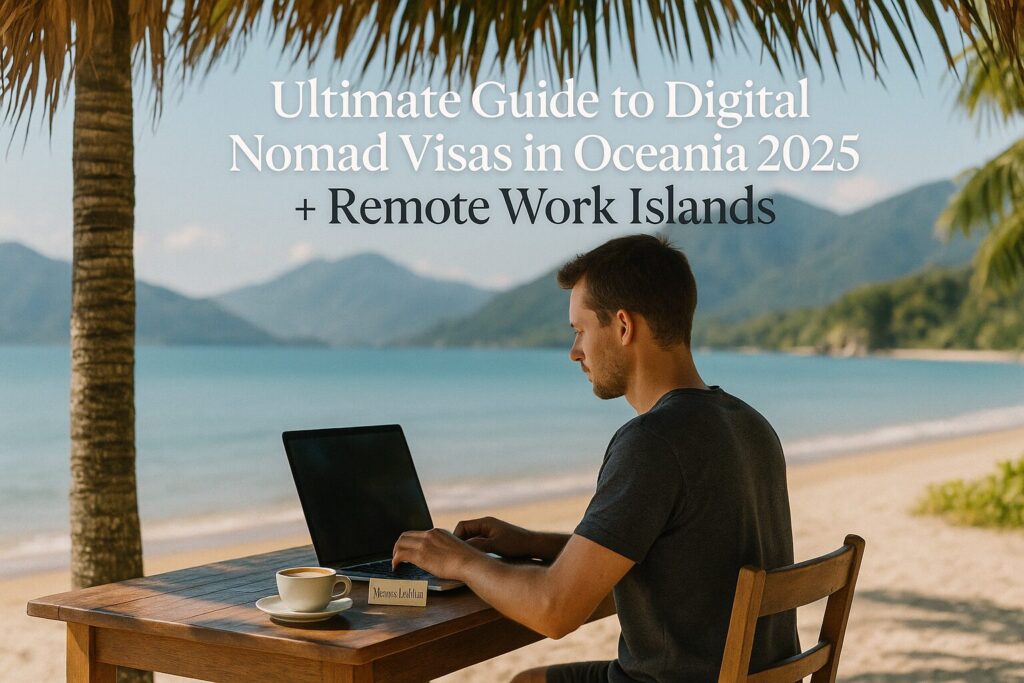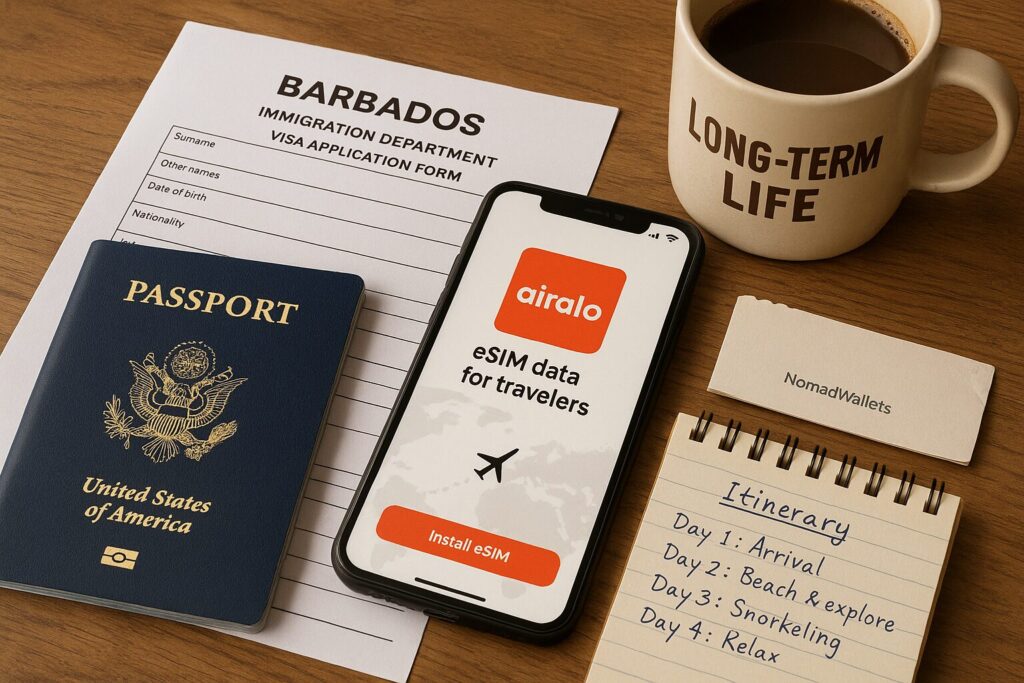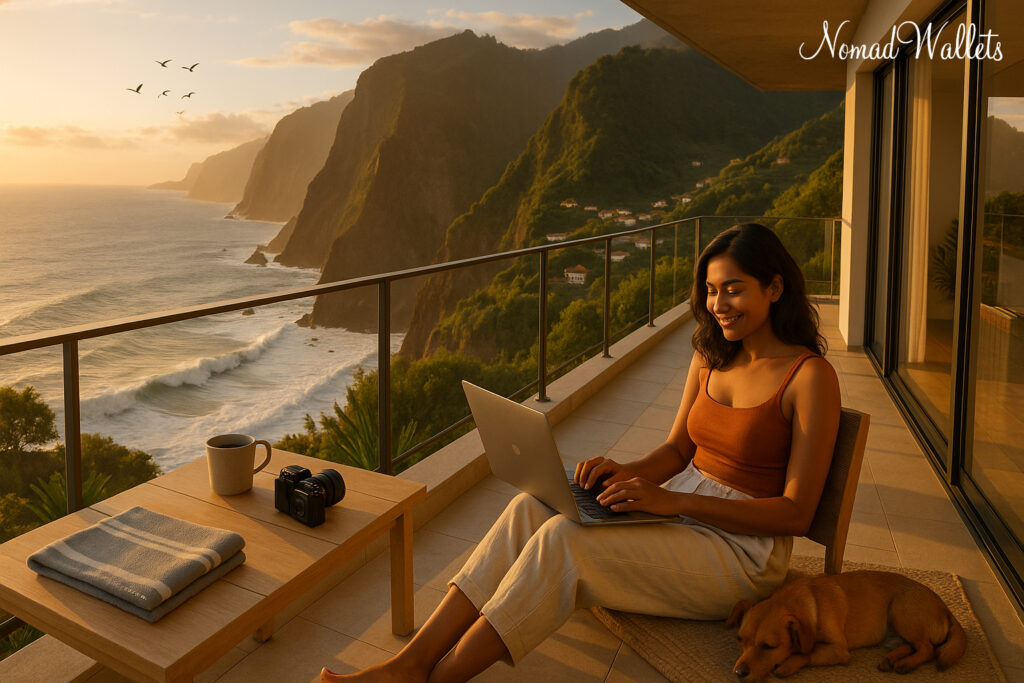
Why Digital Nomads Are Drifting Toward Oceania and Remote Islands in 2025
Let’s face it — if you’ve been working remotely for a while, you’ve probably dreamed about running away to a sunny island with fast Wi-Fi and no meetings on Mondays. In 2025, that dream is actually more reachable than ever.
Digital nomad visas in oceania 2025 and other remote destinations — places that once felt “too far” or “too complicated” — are stepping into the digital nomad spotlight. Countries like Australia and New Zealand are adjusting their visa systems to accommodate remote workers. Meanwhile, island nations like Barbados, or even autonomous regions like Madeira, are actively building digital visa programs designed for people with laptops and wanderlust.
These aren’t just vacation spots anymore — they’re becoming real bases for nomads who want a slower pace, natural beauty, and the kind of peace you won’t find in a big city.

Top Countries & Remote Regions Offering Nomad-Friendly Visas (or Workarounds)
If you’re craving waves, mountains, or the kind of nature that makes you forget Slack even exists, here are a few places that are ready to welcome you — legally and long-term.
🇦🇺 Australia – Working Holiday Visa or Business Workaround
Australia doesn’t have a formal digital nomad visa just yet, but there are loopholes remote workers are using successfully.
- Visa Options: Working Holiday Visa (if under 35) or Business Visitor visa (short stays)
- Duration: 12 months (WHV), 3 months (Business)
- Need to Know: You’re not technically allowed to work for an Australian company — but remote work for overseas clients is fine. Just be discreet.
👉 Best For: Nature lovers, surf junkies, and city nomads who want a base in Sydney, Melbourne, or Byron Bay.
🇳🇿 New Zealand – Working Holiday or Freelance-Friendly Visas
New Zealand isn’t calling it a “nomad visa,” but some of its existing programs work great for freelancers and remote employees.
- Visa Options: Working Holiday, Visitor Visa (with remote work not clearly restricted)
- Duration: 6–12 months
- Bonus: Access to coworking spaces in Queenstown, Auckland, Wellington — plus jaw-dropping hikes after work.
👉 Best For: Nomads craving stunning views, a slower pace, and some of the cleanest air on Earth.
🇧🇧 Barbados – Welcome Stamp Visa
This one’s official — and made just for remote workers.
- Duration: 12 months (renewable)
- Income Requirement: $50,000/year
- What’s Cool: You’re working from a Caribbean beach, legally. Enough said.
👉 Best For: Anyone who wants tropical island life without giving up stable internet or work calls.
🇵🇹 Madeira (Portugal) – Digital Nomad Village
Not exactly a country, but Madeira (a semi-autonomous island region of Portugal) has built a literal village for digital nomads. It’s cozy, community-driven, and full of remote workers from around the world.
- Visa Route: Portugal’s existing D7 or Digital Nomad Visa
- Why It’s Different: You get the support of a built-in community — including coworking space, events, and housing help.
👉 Best For: Social nomads, Europeans avoiding cold winters, or remote workers who want both Wi-Fi and wine.
Visa Comparison Snapshot: Requirements at a Glance
Alright, so you’ve got options — but which one fits your situation best? Here’s a quick cheat sheet so you don’t have to dig through embassy websites at 2 a.m.
| Destination | Visa Type | Duration | Min. Income | Remote Work Allowed? | Renewable? |
| Australia | WHV / Business Visitor | 3–12 months | N/A (age restrictions) | ✅ (for non-Aussie clients) | ✅ (WHV extensions available) |
| New Zealand | WHV / Visitor Visa | 6–12 months | N/A | ✅ (gray area, but common) | ❌ (for most) |
| Barbados | Welcome Stamp | 12 months | $50,000/year | ✅ | ✅ |
| Madeira | D7 / Digital Nomad Visa | 12+ months | ~$2,750/month | ✅ | ✅ |

Travel Tips for Long-Term Nomads in Oceania & Remote Spots
Alright, so you’re nearly sold. But before you pack up and trade your desk chair for a hammock, here are a few real-world tips that’ll save you time, money, and at least one forehead slap.
Brush Up on the Local Lingo
Even in English-speaking countries, things work differently. Aussies have slang for everything (you’ll order an “avo toast” without even blinking). And if you’re heading to Barbados or stopping by non-English speaking islands en route — knowing basic greetings and customs goes a long way.
Pack Smart (Really Smart)
You don’t need five pairs of shoes or three power adapters you’ll never use. But you do need:
- A universal adapter (trust me)
- A backup hard drive
- A VPN (some public Wi-Fi is sketchy)
- Lightweight clothes for humid days (hello, Barbados)
- Layers for chillier island nights (Madeira gets breezy)
Respect the Rules (Especially the Boring Ones)
Yes, taxes and visa renewals are boring — but they matter. Especially in Australia and New Zealand, don’t assume anything about working remotely without checking the official stance. Just because other nomads do it, doesn’t mean you’re automatically in the clear.
Also, things like health insurance, proof of income, and accommodation bookings are often required at the border. Keep a digital folder ready — like a “Nomad Docs” kit on Google Drive.
Slow Travel Wins
The beauty of these remote destinations is best enjoyed slowly. Settle in. Learn the neighborhood. Find your favorite café. You’re not a tourist anymore — you’re building a lifestyle.

Best Remote Cities & Islands for Digital Nomads in 2025
Some of these places have been low-key digital nomad magnets for a while… others are just getting their moment. Here’s where people are landing — and why they’re staying.
🏝️ Ponta do Sol, Madeira
They literally call it the Digital Nomad Village. You’ll find pop-up coworking spaces, community dinners, free events, and a built-in support network. Oh — and ocean sunsets, wine, and weekend hiking.
🌊 Bridgetown, Barbados
It’s a bit pricier than Southeast Asia, but you get warm weather, friendly locals, and the kind of peaceful energy that makes you want to write a novel or launch that side hustle.
🏄 Byron Bay, Australia
Yes, it’s a bit of a cliché at this point, but it earns its hype. Think: daily surf, great coffee, chill coworking, and sunsets you’ll want to post about (but try to resist, okay?).
🏞️ Queenstown, New Zealand
Cowork in the morning, bungee jump in the afternoon. It’s touristy, sure — but still surprisingly friendly for remote workers who want a little adrenaline with their Zoom meetings.
FAQ: Nomading in Remote Places
Q1. Can I really work online in Australia or New Zealand without a special visa?
It’s a gray area. Technically, remote work for non-local companies isn’t always regulated, so many nomads use a Working Holiday Visa or Tourist Visa and work online quietly. That said, don’t take a local job without the proper work permit — that’s where legal trouble starts.
Q2. Is internet fast enough in Barbados and Madeira for real work?
Surprisingly, yes! Barbados has solid fiber optic infrastructure, and Madeira (especially in Ponta do Sol) was built with remote workers in mind. Don’t expect 5G everywhere, but for Zoom calls, uploading files, and running online businesses — you’ll be just fine.
Q3. Do I need travel insurance to apply for these visas?
Usually, yes. Most visa programs — including Barbados and Portugal — require proof of health or travel insurance that covers your entire stay. Providers like SafetyWing or World Nomads are popular choices among long-term travelers.
Q4. What’s the best island for community vibes?
That would be Madeira. It’s built to connect people — from morning coworking sessions to Friday dinners. Barbados is better for solo reflection and chill life, while Australia and New Zealand offer big digital nomad scenes in cities like Melbourne, Wellington, and Byron Bay.
Q5. How do I prove I make enough income for visa applications?
Usually by showing bank statements, tax returns, or a letter from your employer or clients. Some places, like Barbados, are stricter than others. A clean digital portfolio with verified earnings goes a long way.
Final Thoughts: Remote Doesn’t Have to Mean Isolated
If you’ve ever dreamed about working from the edge of the world — where beaches are empty, skies are clear, and your workday ends with a sunset hike — Oceania and remote nomad islands are finally on the table.
Sure, you’ll need to fill out a few extra forms. And yeah, it might cost more than Bali. But the lifestyle trade-off? Worth it.
👉 Whether you’re in it for the community (Madeira), adventure (New Zealand), or sun-soaked peace (Barbados) — there’s never been a better time to explore the edges of the map.
Related Reads from NomadWallets:
- ✈️ How to Find Remote Jobs in 2025 (No Fluff Guide)
- 🧳 25 Best Solo Travel Destinations for Digital Nomads
- 🛡️ Complete Guide to Travel Insurance for Digital Nomads
Thinking of making a remote island your next office? From #Australia to #Barbados, #Madeira to #NewZealand, the options in #OceaniaForNomads are expanding fast in 2025. 🌍 This guide to #DigitalNomadVisasInOceania2025 covers everything you need — including visa tips, comparison tables, and the best remote-friendly islands to set up your laptop and live the dream. Don’t forget to check out our posts on #RemoteJobs, #NomadInsurance, and the top #SoloTravelDestinations to complete your nomadic setup.
Hi, I’m Tushar a digital nomad and the founder of NomadWallets.com. After years of working remotely and traveling across Asia and Europe, I started NomadWallets to help U.S. nomads confidently manage money, travel, banking, crypto, and taxes. My mission is to make complex financial topics simple, so you can focus on exploring the world and building true location freedom.
